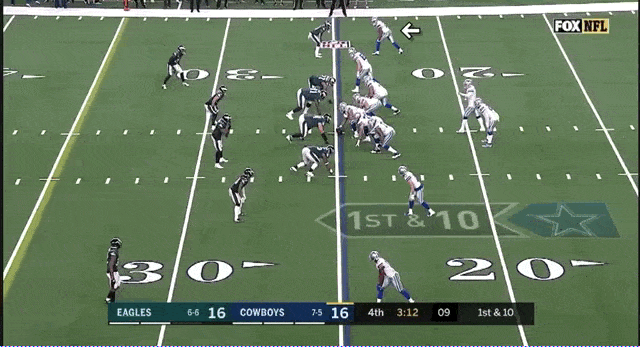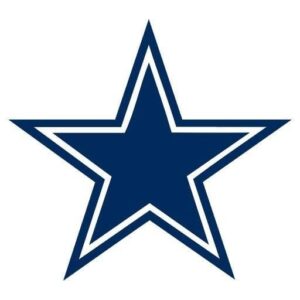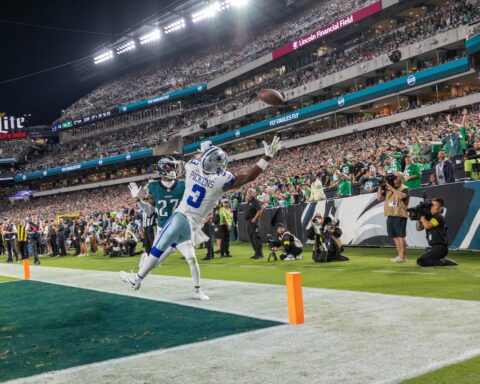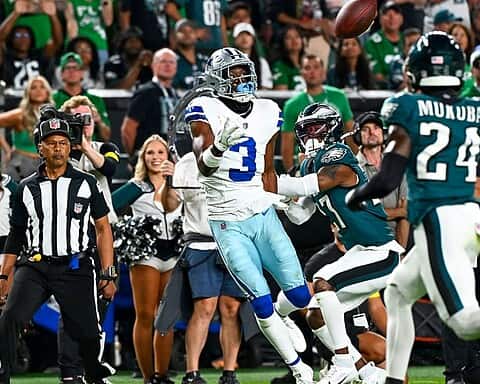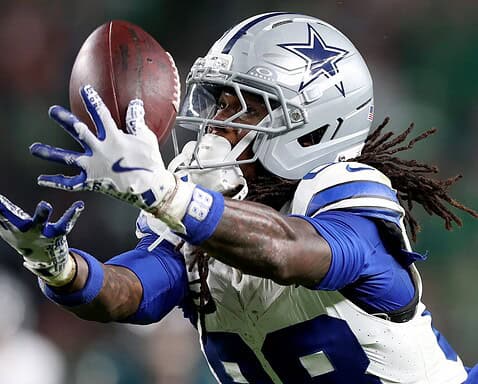In the NFL and in other realms of life, it’s easy to get caught up believing a prevailing narrative about a person, or in our case a player. Narratives can be positive or negative. They can be both true and untrue. Generally once a narrative gets applied to a player, it’s very difficult for said player to shake it.
Consider the narratives on Tony Romo. For years people told us that he was a choke artist, yet he has one of the better passer ratings and countless fourth quarter comebacks to state otherwise, yet the narrative persists, even after his retirement. Conversely, Sean Lee’s been tagged with the “injury prone” narrative, and given the bad luck he’s had in his career, it’s easy to see why.
One such narrative I want to tackle today, is that of Amari Cooper and drops.
Leading up to the trade that led to the Oakland Raiders sending Amari Cooper to the Dallas Cowboys, , the word on Cooper was that he struggled with drops. Honestly, it’s a narrative that I bought into even before the rumors of the possible trade went down.
The narrative is real. Even this week, Raiders fans were jumping on social media to gloat about drafting Jonathan Abram with the 27th overall pick. Those fans argued that Cooper wasn’t a good receiver because he drops the ball. You don’t want to see your wide receiver drop the ball, but I’d argue they aren’t as important a stat as some make it out to be.
In 2015, Cooper’s rookie season, he led the NFL with 18 drops. He still managed 72 catches for 1,070 yards, and six touchdowns. For a rookie receiver in the NFL that’s a really, really good stat line. In 2016, Cooper only had four drops on 127 targets. That second season he posted 83 receptions for 1,154 yards, and five touchdowns.
Unfortunately, drops reared their ugly head again in the 2017 when Cooper finished with 10 drops on the season. In 2018, he was able to limit his drops to six between the Oakland Raiders and Dallas Cowboys.
The problem with looking only at the numbers is the subjectivity in what could be dubbed a catchable pass. The general rule is if a pass hits a receiver in the hands, he should catch it. I’ve been guilty of this standard at times, but it’s not so cut and dry.
There are times when a wide receiver makes an incredible effort and is able to get his hands on a ball that he probably shouldn’t have. I think back to a pass last season that was “dropped” by Tavon Austin on a high throw from Dak Prescott. If Austin were a couple inches taller, he probably makes the catch, but he isn’t and he didn’t. However, he made an incredibly athletic play to get his hands on the football and nearly came down with the catch.
At the time, I argued that play was a drop, though that was a heat of the moment take. The throw was good enough to be a catch, but too high for Austin to reasonably be able to make a play.
Drop numbers can be subjective, depending on who is scoring the play. Two different people could call an incompletion two different ways.
Just like every quarterback misses throws (that for another time), every wide receiver drops passes, even the elite ones.
Atlanta Falcons Wide Receiver Julio Jones has averaged eight drops a season for the last four years. Tampa Bay’s Mike Evans is averaging 8.25 drops a season in that same time span. Julian Edelman, the MVP of the most recent Super Bowl — and according to Patriots fans, future hall of famer — averaged nine drops per season over the last four years.
Amari Cooper’s 9.5 drops per season sounds like a lot, but when you compare to some of his contemporaries, it’s on par with two of the best wide receivers in the NFL. Yes, he had the high season of any of those players mentioned above, but he also had the low with four in 2016.
Julio Jones is widely considered a top five wide receiver in the NFL. Many would argue that Mike Evans is there too. However, if drops are so important, then how come we don’t kill those players for their supposedly faulty hands.
In Cooper’s nine games after the Dallas Cowboys acquired him in 2018, he only had three drops with a 4.1% drop rate on 72 targets. In that same time frame here are a few notable player who dropped the ball more often than Amari Cooper from week nine to 17.
- Calvin Ridley: 6 drops on 57 targets for a drop percentage of 10.5%.
- Alshon Jeffrey: 4 drops on 47 targets for a drop percentage of 8.5%.
- Julian Edelman: 5 drops on 89 targets for a drop percentage of 8.3%.
- Mike Evans: 4 drops on 68 targets for a drop percentage of 5.8%.
- Julio Jones: 5 drops on 89 targets for a drop percentage of 5.6%.
The only thing that people can criticize Amari Cooper’s play for are his drops. Yet, compared to some of the best wide receivers in the NFL, Julio Jones and Mike Evans in particular, Cooper had fewer drops per target in second half of 2018.
In the 2018 NFL Draft, many in Cowboys Nation wanted the Cowboys to draft Calvin Ridley instead of Leighton Vander Esch. Ridley and Amari Cooper are roughly the same age, yet Cooper’s been in the league for four seasons now, has made three Pro Bowls, and has three 1,000 yard seasons to his name. Ridley dropped the ball more than twice as often as Cooper did in the second half of 2018.
In the modern NFL where passing has become king, more value has been placed on the wide receiver position. If you’ve paid attention to the salaries that wide receivers are getting, they are nearly the same value as pass rushers in the league.
Drops, however, are not a good indicator of wide receiver play. Do they matter, maybe, but not nearly as much as yardage, yards per route run, touchdowns, first down receptions, yards of separation at the catch point, yards per catch, yards after the catch per reception, and catch percentage.
Amari Cooper may not be the best wide receiver in the NFL. There are a few guys who could reasonably make that claim. However, the reason isn’t because he drops footballs. Amari Cooper is one of the best route runners in the NFL and as we saw in the second half of last season, can absolutely change the game.
Don’t buy into the “Amari Cooper is a bad receiver because he drops footballs narrative.” As soon as you do, you better turn around and argue that Julio Jones is not a good wide receiver because he drops footballs too.
Amari Cooper is one of the 10-15 best wide receivers in the NFL. He does so many things well and can make so many things happen after the catch. Dropping the ball should be the least of our concern as the Dallas Cowboys look to get a contract extension done with their WR1.
2019 will be a fun season to watch as Dak Prescott and Amari Cooper get a full offseason of work. With Cooper heading into his age 25 season, he’s about to enter his prime years. If his first nine games in Dallas are any indication, “Get your popcorn ready,” because he’s going to put on a show.
